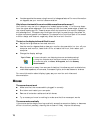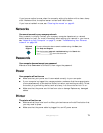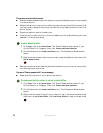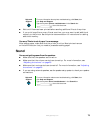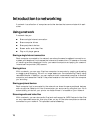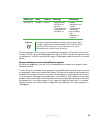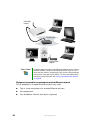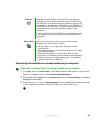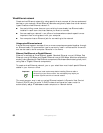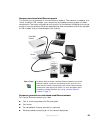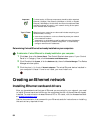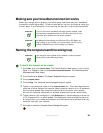
78
www.gateway.com
Wireless Ethernet speed and frequency
Wireless Ethernet is available at two different speeds and at two different frequencies. The
following table compares the various wireless Ethernet network types.
Important If your computer came equipped with an internal radio frequency
wireless device, see “Safety, Regulatory, and Legal Information” in
your user’s guide for general wireless regulatory and safety
guidelines. To find out if your computer has an internal wireless
device, check the device manager. For more information, see
“Determining if wireless Ethernet is already installed on your
computers” on page 81.
Important Note any antenna placement constraints in the user guide of each
type of wireless device in your network.
Network Type Speed Frequency Advantages Disadvantages
IEEE 802.11a 54 Mbps 5 GHz Less possible
interference than
IEEE 802.11b and
IEEE 802.11g
■
Shorter range (25
to 75 feet) than
IEEE 802.11b and
IEEE 802.11g
■
Not compatible
with
IEEE 802.11b or
IEEE 802.11g
networks
IEEE 802.11b 11 Mbps 2.4 GHz
■
Large number of
access points
already exist in
airports, college
campuses, and
businesses
■
Compatible with
IEEE 802.11g
networks
■
Longer range (100
to 150 feet) than
IEEE 802.11a
■
Possible
interference from
cordless
telephones and
microwaves
■
Not compatible
with
IEEE 802.11a
networks



